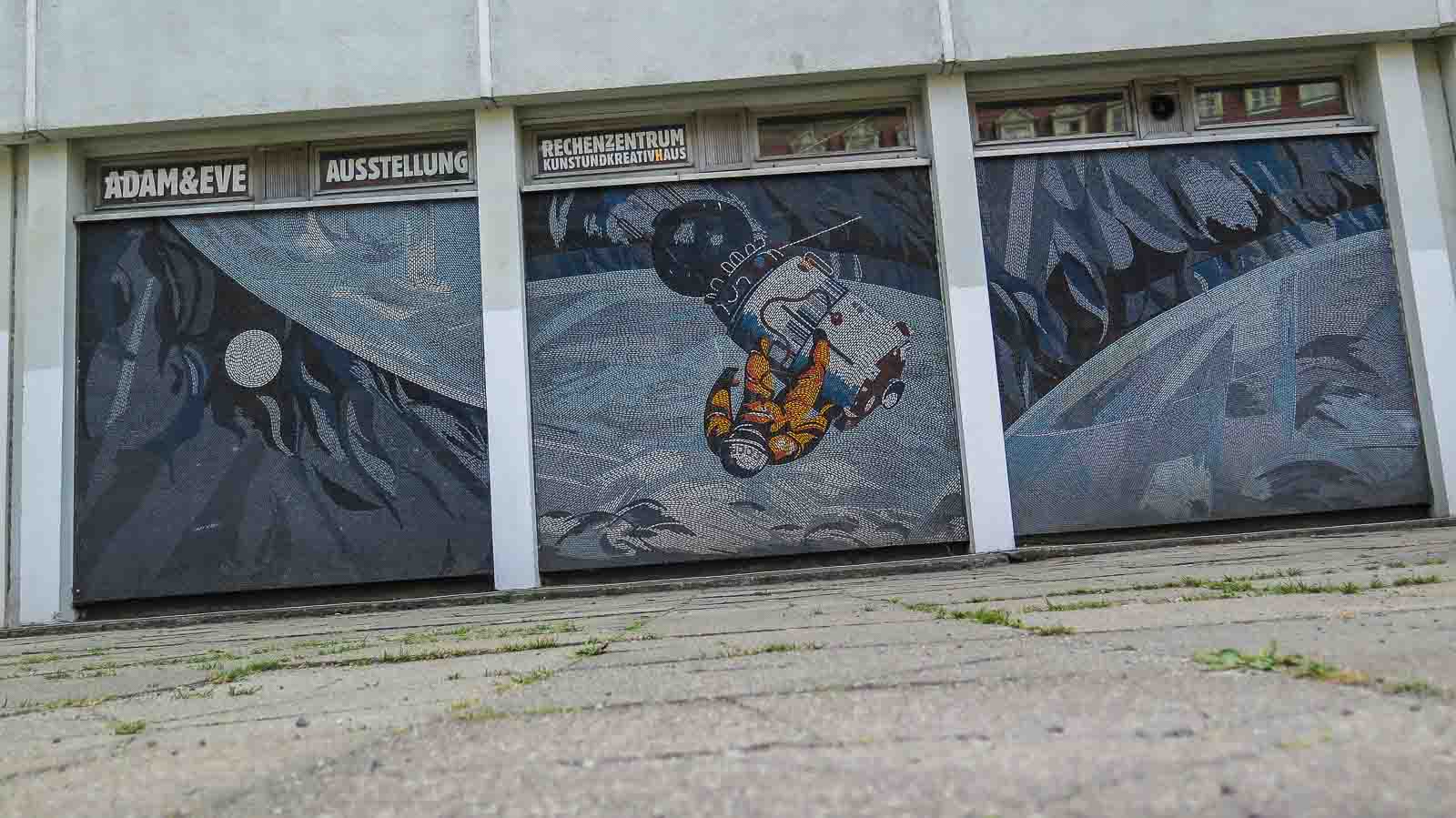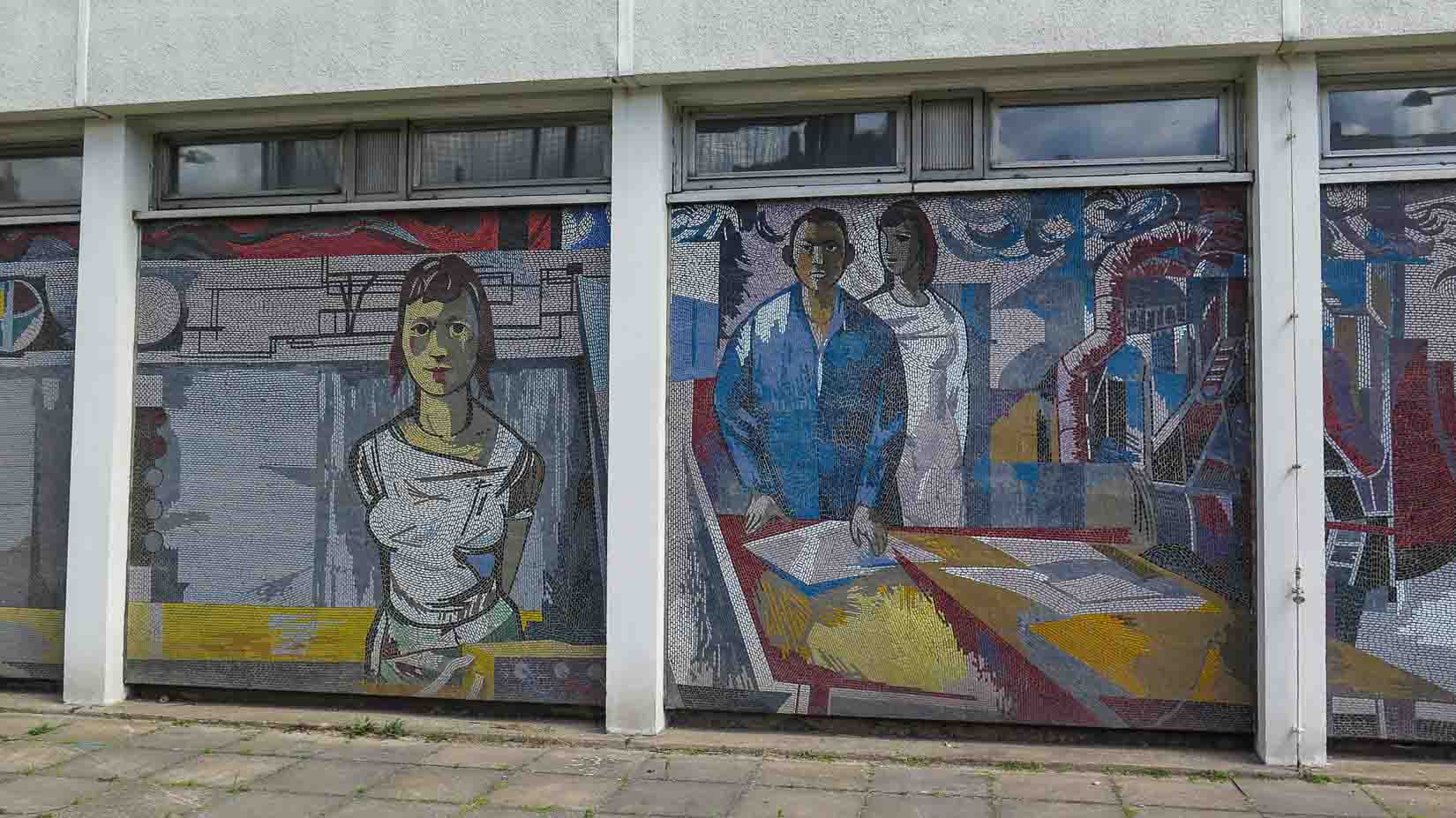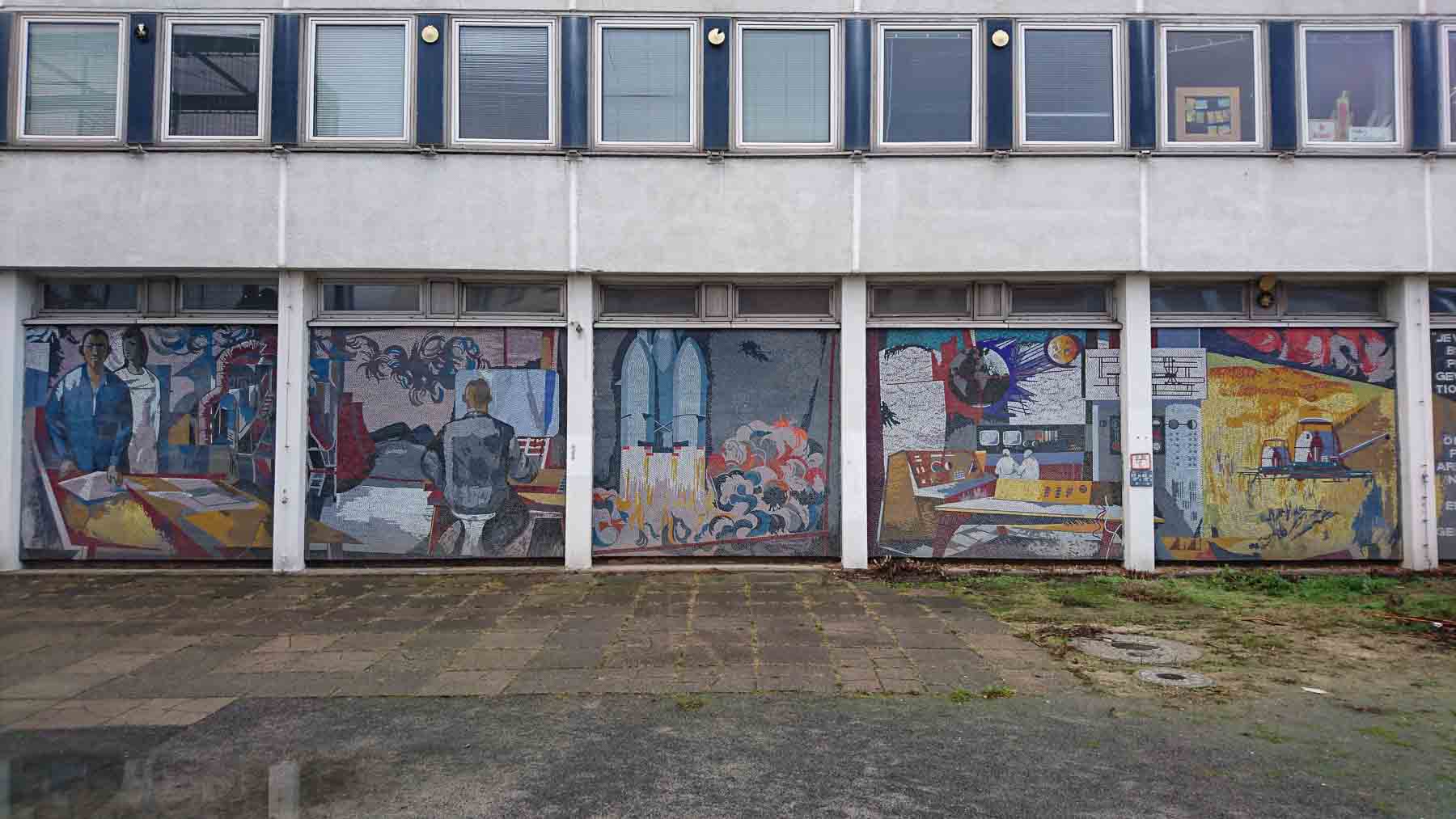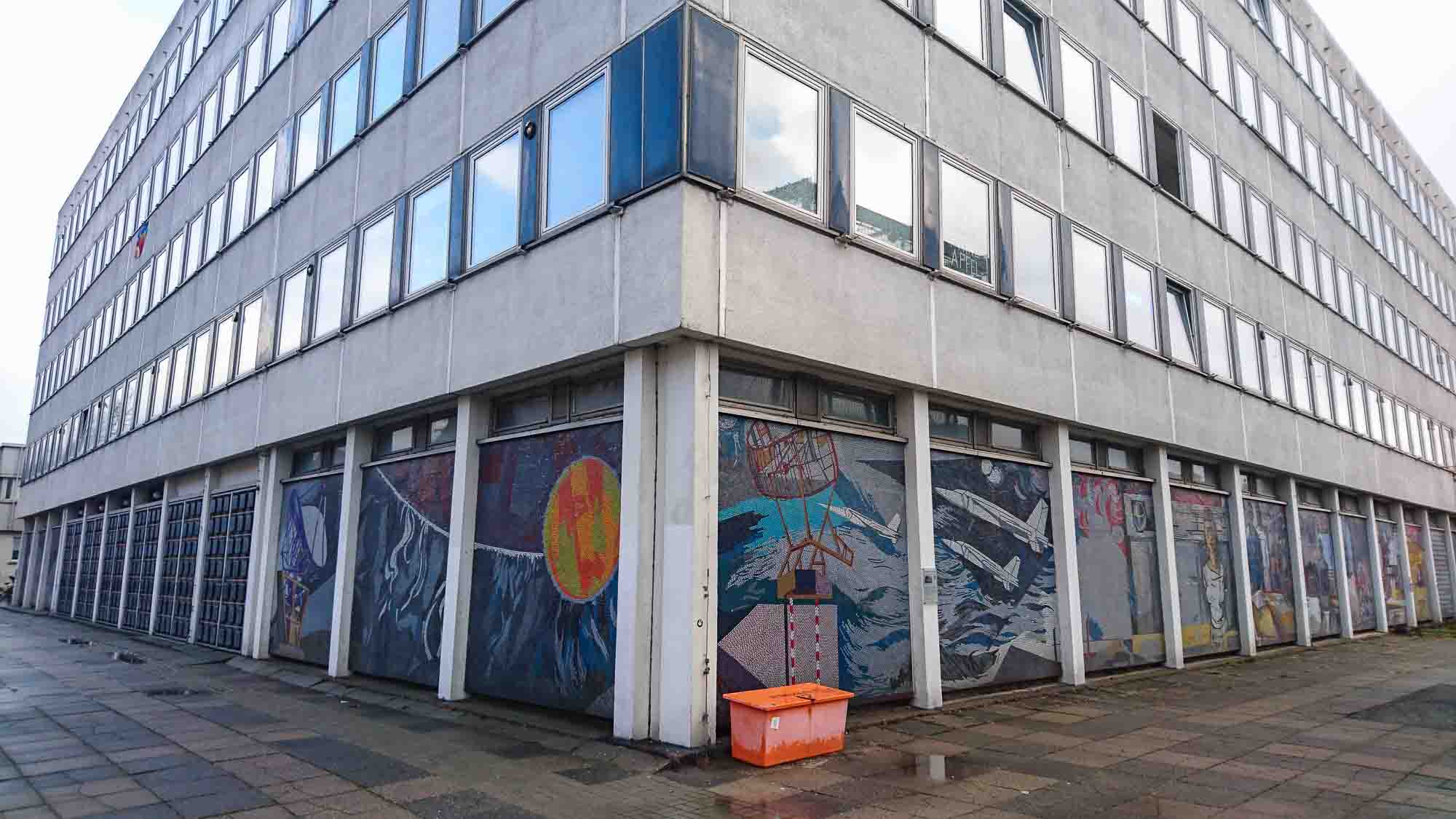The mosaic Man Conquers the Cosmos by the artist Fritz Eisel from 1972 is one of the most famous works of art in public space in Potsdam. It was intended to symbolize the technical progress of socialism.
In the middle of Potsdam, normally dominated by Prussian ochre facades, you suddenly find yourself in front of a grey-blue, socialist building from the early 1970s with a large mosaic in the style of socialist realism. The 18-piece mosaic "Man conquers the cosmos" by Fritz Eisel deals with technical progress and the emergence of socialist societies into space. In the context of the Cold War, it was intended to illustrate the assumed technical superiority of the Eastern Bloc over the West in the race for space.
During the Cold War, the Sputnik shock of 1957 caused a great stir in the West. The Soviet Union had succeeded in sending a satellite into space for the first time. Further triumphs followed, such as the first manned space flight by Yuri Gagarin or the first exit of a cosmonaut into space. This scene shows one of the mosaics, each measuring almost three by three meters. The Soviet cosmonaut Alexei Leonov left his spaceship for about 12 minutes in March 1965 and floated freely in space. This almost led to a catastrophe. Due to the immense pressure difference to the vacuum of space, his spacesuit inflated so that it no longer fitted through the hatch to the spaceship. So he had to release pressure through a valve, which was a risky manoeuvre, but allowed him to return successfully to the ship. Leonov was also supposed to become the first man on the moon, but this time the American NASA was faster. The US astronaut Neil Armstrong was the first man to set foot on the moon in 1969.
For a long time there have been discussions whether the two panels left and right of Leonov are wrongly mounted, because the earth is wrongly represented in the background. One side says that the artist wanted to show the different perspectives from the spaceship. The other side suspects silent protest of the workers.The entire mosaic adorns on three sides the socialist building, completed in 1971, which today houses the Künstlerhaus Rechenzentrum.
The big question is for how much longer. Right next door, the tower of the Prussian Garrison Church is being rebuilt. The church was heavily damaged during the Second World War and was finally demolished at the end of the 1960s. Practically at this place the Rechenzentrum was built. The reconstruction divide the city society. This is not only about the historical legacy of the former Prussian military church, but also about the future of the Rechenzentrum and the mosaic, which is a listed piece of art.
Further interesting blog posts about Berlin's Soviet history as well as guided tours in Berlin, Potsdam and beyond can be found on our pages.




